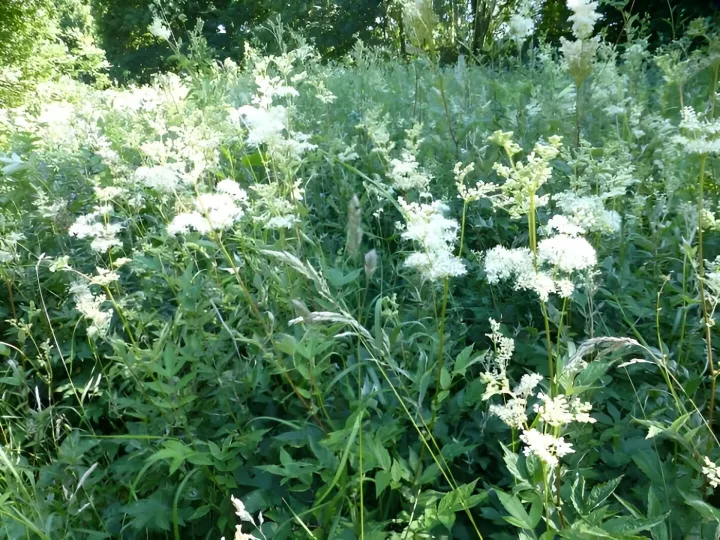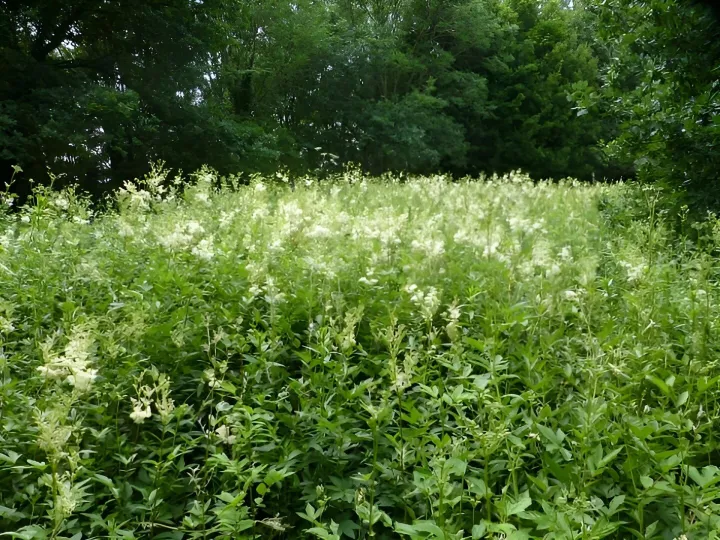Of all the experimental wildflower areas set up by Jim Grogan and his volunteers in the early days of the woodland, the area of meadowsweet is by far the most successful. And, when seen en masse, it is a beautiful sight with its frothy white flowers set against the gentle green tints of its foliage. Meadowsweet reputedly flourishes in "damp soil in grassland and heathland and in areas where water levels rise and fall".
Its name, together with the longevity of its scent, suggests some of the traditional uses of Meadowsweet. It was once valued for its lasting fragrance; the dried flowers were strewn across floors to perfume the home and it seems that it was a particular favourite of Queen Elizabeth I, who used the plant instead of straw on her chamber floors. It is also edible and can be used as flavouring in a similar way to elderflower. It is said that the name derives from its use in Anglo-Saxon times to flavour mead. The flowers can be added to stewed fruit and jams, giving them a subtle almond flavour and, once dried, are used in potpourri.
Meadowsweet has many medicinal properties. At a time before medicines for pain were widespread, the whole plant was steeped in water to make a tea which could be used as a remedy for an acidic stomach. The painkilling properties are thanks to the presence of Salicylic Acid, which could also be derived (and hence named) by herbalists from the bark of Willow trees (Salix is the Latin name for the Willow family.) Felix Hoffmann (a name very familiar to Organic Chemists!) used Salicylic Acid from Meadowsweet to synthesise a new painkilling drug, Acetylsalicylic Acid. This was then named by his employers, Bayer AG, from Meadowsweet's old botanical name – Spirea ulmaria. Hence the drug became Aspirin – the very first of the class of drugs now known as non-steroidal anti-inflammatories (NSAIDs).

